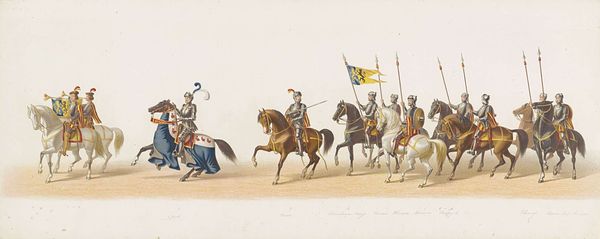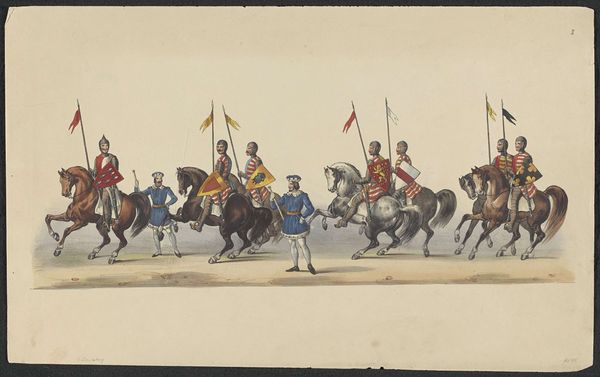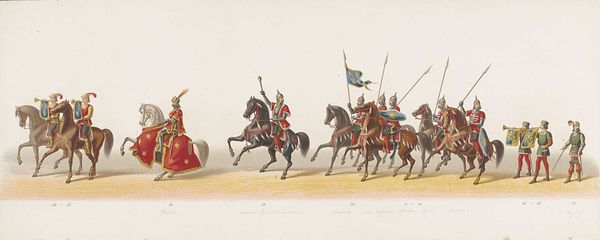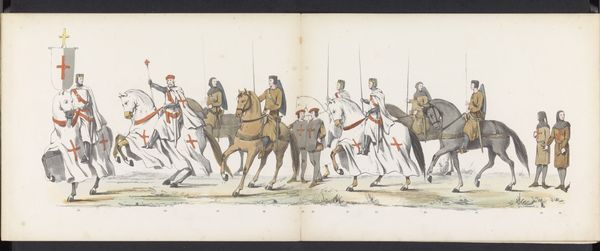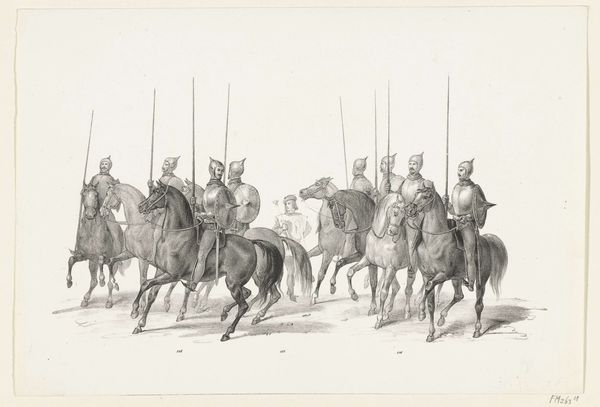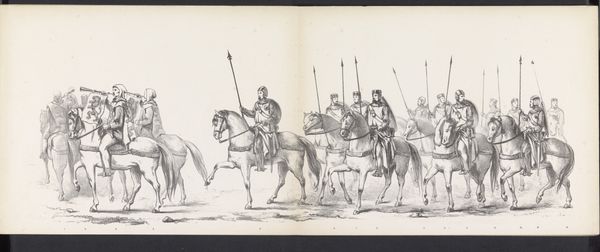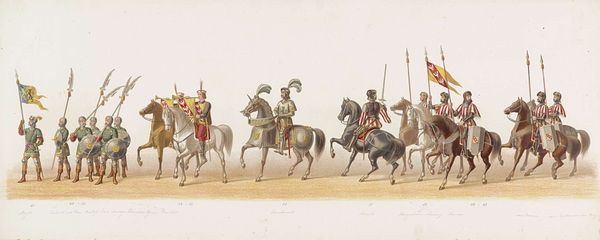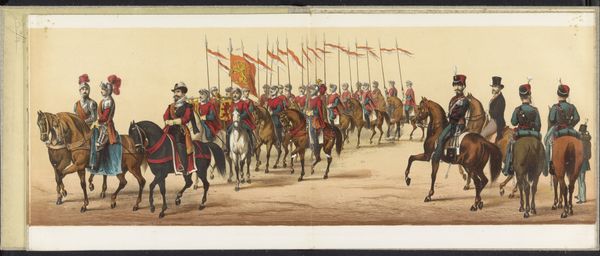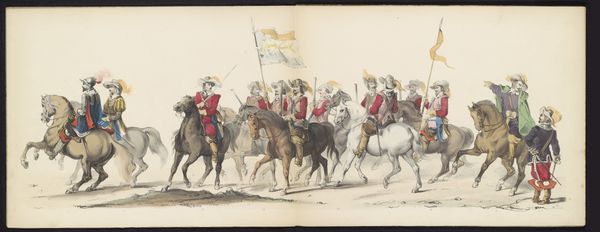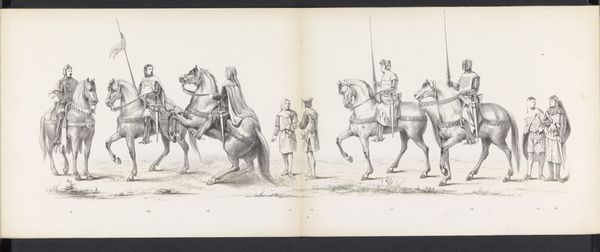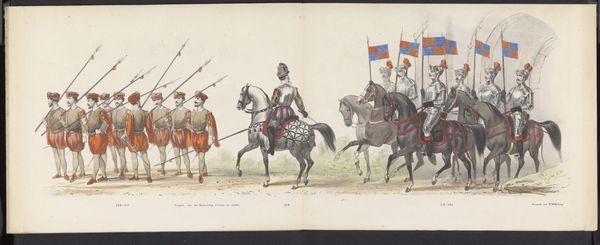
drawing, watercolor
#
drawing
#
figuration
#
watercolor
#
watercolour illustration
#
genre-painting
#
history-painting
#
academic-art
Dimensions: height 300 mm, width 480 mm
Copyright: Rijks Museum: Open Domain
Curator: Let’s discuss this piece from 1841; an anonymous watercolor and drawing held here at the Rijksmuseum titled, “Gekostumeerde optocht van 1841: ruiters en narren (blad XVIII)”. Roughly translated: "Costumed parade of 1841: riders and fools." What's your first reaction? Editor: It feels quite theatrical! There’s something about the crisp linearity and delicate application of watercolor that lends itself well to costumery and pageantry. Curator: Indeed. While classified as genre and history painting, its theatricality connects to the academic tradition which valorized grand historical narratives—but these displays reinforced very specific social hierarchies. Note how order and discipline of the riders gives way to the jester. What does this say about permitted forms of dissent? Editor: Exactly! The image makes me think about how performative displays were often carefully staged. I would like to know how parades and processions such as this worked in the theater of the State; did they shore up the symbolic power of leadership or create spaces for playful transgression? It would be worth studying in relation to other, similar works of this period. Curator: Definitely, such civic events functioned to disseminate very clear messaging on acceptable social norms and class roles. And it’s fascinating to see how this intersects with the medium; a drawing, watercolour in this case, could quickly communicate idealized images of state power and control to a mass audience, more effectively than, say, a large scale oil painting intended for one aristocratic family. Editor: The arrangement of the riders also seems relevant. Their uniformity of armor juxtaposes the chaotic positioning and garb of the jester in the right foreground, yet that is where my eyes go! The fool disrupts the uniformity in a big way. The drawing certainly shows how cultural spectacles, even humorous ones, operate within strict symbolic frameworks. Curator: Yes, so while visually appealing in its elegant lines and soft color palette, this drawing invites interrogation: what values were being celebrated in this performance, and for whom? It subtly directs attention to themes of identity, class and power during this era. Editor: I concur. By understanding the contexts and the motivations that drive the staging of the parades themselves, we expose another facet in its cultural significance. Thanks for sharing your historical insights. Curator: A pleasure. Exploring these performative elements allows us to deepen our understanding, both critically and creatively.
Comments
No comments
Be the first to comment and join the conversation on the ultimate creative platform.
